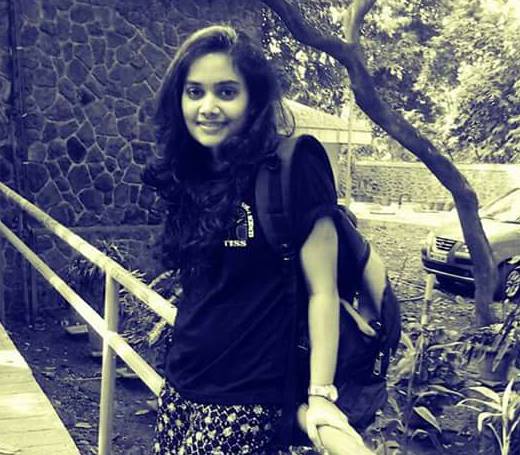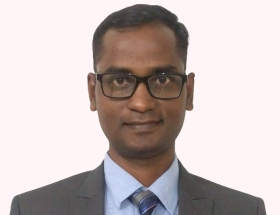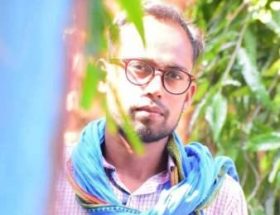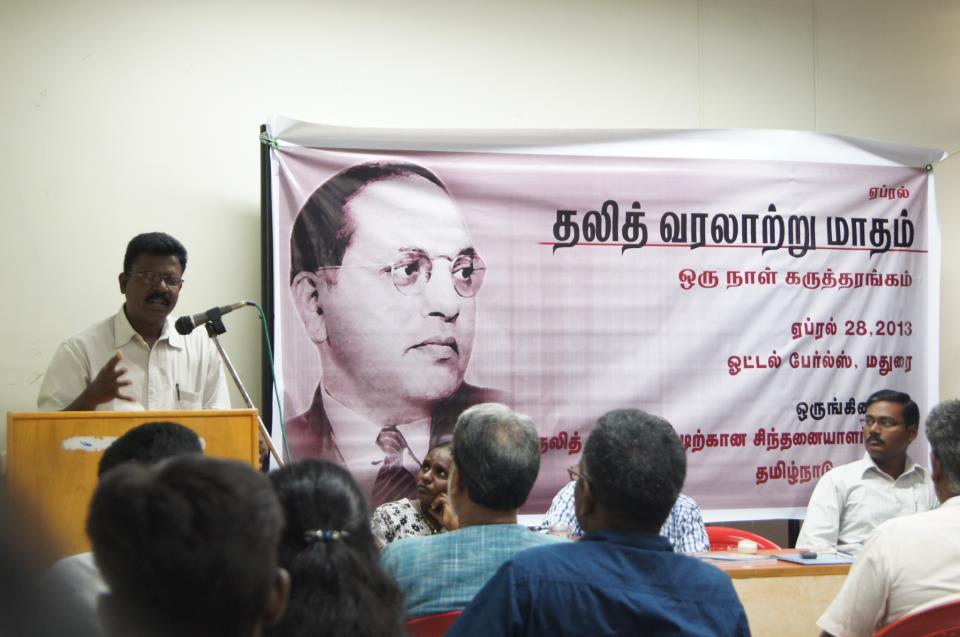Pranali Garud
 Caste is a disease that affects people of India in different ways. It treats its victims differently from its beneficiaries, but the preamble of the constitution of India endorses an undifferentiated fraternity. Though we are all Indians, caste does not allow us to live with the single identity of being Indian. You can find people of assigned different social status – inferior to superior – depending upon their caste. Dr. Ambedkar argues “People divided into thousands of castes can never become a nation”. Caste divides people by birth, and until you die that disease does not allow you to free yourself. Fatal diseases such as cancer, leprosy etc., can be treated or controlled with proper medication, but the caste disease has no treatment because the pride or shame of a particular caste sticks to it throughout its life. Hence, we are divided as a nation.
Caste is a disease that affects people of India in different ways. It treats its victims differently from its beneficiaries, but the preamble of the constitution of India endorses an undifferentiated fraternity. Though we are all Indians, caste does not allow us to live with the single identity of being Indian. You can find people of assigned different social status – inferior to superior – depending upon their caste. Dr. Ambedkar argues “People divided into thousands of castes can never become a nation”. Caste divides people by birth, and until you die that disease does not allow you to free yourself. Fatal diseases such as cancer, leprosy etc., can be treated or controlled with proper medication, but the caste disease has no treatment because the pride or shame of a particular caste sticks to it throughout its life. Hence, we are divided as a nation.
The upper castes form the privileged elite who enjoy ownership of land and therefore are more powerful economically, politically and socially. They dominate Indian society, more particularly in the villages, and hence village social structure is the biggest hurdle for Dalits in India. The term ‘Dalit’ itself divides them from the upper castes and so their houses are also outside the village as they are considered impure, and some people tell them, “You must have done something really bad in the past, therefore you are suffering from untouchability.” Upper castes have separate wells and temples which no dalit is allowed to access. There are still some places in India where Dalits drink water from separate containers, are not allowed access to education, or to walk on the street with shoes. The untouchables are called by different names i.e. Bhangi, Mahar, Chamar and are also a target of derogatory labeling because they are seen as dirty people. In the movie Fandry they are called as fandry (Pigs). Dalits work under the privileged upper castes, on their farms, in the villages, as daily wage labours; they are forced to do low-grade jobs.
Urban areas are not an exception; caste discrimination continues to exist there, though it is different from rural areas. The educated, urban middle classes still cannot seem to get rid of older ways of thinking.
The Bhotmanges, a progressive family was a target of the same (caste) disease in Khairlanji village, Bhandara district. Bhaiyyalal Bhotmange, head of the family, owned five and a half acres land in the village. When 0.4 acres land was asked by landlords and other villagers to construct a road through his land, Bhaiyyalal, gave it happily. But after some days, they started demanding more land. Then he refused to give his land to the upper castes and they got infuriated. They felt insulted. This was also one of the reasons for the inhuman Khairlanji incidence. Bhaiyyalal informed his brother-in-law Siddharth Gajbhiye about the situation, the police patil of Ghusala village, 100 km away from Khairlanji. Gajbhiye was beaten by the upper caste Hindus when he came to talk to the landlords, on behalf of the Bhotmange family. Then he was admitted to the Kamptee Hospital. At the time of lodging the complaint against the accused who beat up Gajbhiye, Surekha, Priyanka, Roshan and Sudhir were present as witnesses. Based on their testimony, the accused were arrested. Then the police assured the Bhotmange family not to worry about the incidence, and said that the villagers would not harm them henceforth. They appealed to them to return to Khairlanji.
On 29th September 2006, around 5-7 pm, the violent incident took place at Khairlanji village. Bhaiyalal Bhotmange’s wife Surekha, with her daughter Priyanka and two sons, Sudhir and Roshan, were present in the house, busy with their daily routine. Suddenly, a caste Hindu mob entered their house and started beating them. When Priyanka started arguing with the Hindu mob, she was dragged out of the house along with her mother and two brothers. They were mentally and physically tortured, gang-raped and sexually assaulted in their private parts; Sudhir’s and Roshan’s private parts were mutilated after they refused to have sex with Priyanka (here, their aim was to make them real shameful so that they couldn’t face each other). After that they were forced to run naked in the village. That was not enough for the upper caste villagers, so they murdered the entire Bhotmange family. Even after their death, some men were still kicking at their dead bodies.
Bhaiyalal, the lone survivor of the family, had witnessed the whole incident by hiding behind a small hut in the neighbourhood. He was completely shattered, fearful, confused, broken. For one full week, nobody from the government authority spoke to him about the incident. He couldn’t believe that he had lost his wife and children, for the land or for the caste they belong to. The entire village had witnessed that brutal act, but no one had the courtesy to come forward and testify in the police station. Are people so heartless and insensitive towards others? Why did even a single woman not stop their men? Nobody opened their mouth about the incidence.
After one week, the news spread through the media about this atrocity. Samrat newspaper (a Dailt owned newspaper) had covered the whole incident and then Lokmat, and Sakal, Nagpur, reported the story in a small box, of 6 cm by 4 cm size, saying that four people including a mother, a daughter and two sons were brutally murdered. They were not sure about the rape. International media too covered the case. Here, I would like to argue that both the print and the electronic media did not give same attention to this story, as they gave to other incidents of a similar nature. Mumbai and Delhi gang rape cases were displayed on the front page, till the accused got punishment. There were protests throughout the state, for the justice for the girl/s. The entire nation was praying for them. Electronic media covered these stories throughout that period.
In those two cases, there were no witnesses, while in the Khairlanji incident the whole village had witnessed it but nobody was ready to give a statement. Some people changed their statements later or they said they did not remember the incident properly. Candlelight marches were held for Delhi and Mumbai rape victims. People were demanding fast track courts so that the accused would get just punishment. Within a few months the apex court declared life imprisonment for the accused in the Delhi incident. In contrast, the Khairlanji case had seen a very lethargic or no response from the government and the judiciary for years. Based on historical facts and evidences, we can conclude that atrocities on dalits are of no interest to the media to publish or broadcast. Rather, they spend a lot of time broadcasting stupidity on the television. They are very keen to show every activity, when something occurs against upper castes. In India, the print and the electronic media is highly biased, one can easily get to see this anywhere in Indian society.
When the incident itself received so little media attention, one can imagine how inadequate and biased was the reportage on the massive and long protests that followed the brutal massacre. Here, a few young Ambedkarites remember the protests:
Memories of Protest
Pavan Salve, TISS.
“There is a fight between Hindus and Dalits in every Indian village” says Pavan Salve, age 23, studying criminology and justice at Tata Institute of Social Sciences.
In most of the villages, the young college/school going students cannot even interact with the upper caste girls, while walking on the road. Even if they glance at them they are beaten by the upper caste boys or by the girls’ families. “They just want a reason to kill us and eliminate us from society. I came to know about this incident through Samrat daily newspaper, Nagpur edition, and I would like to add that in Nagpur, Marathwada and Vidarbha, dalit families subscribe to this daily newspaper even if most of the family does not know how to read the newspaper. I belong to one of these families; my father used to call me after school and make me read the newspaper aloud. I look at this incident as a caste atrocity and not murder because the upper castes cannot digest our progress and cannot see us live our lives with dignity. Anyone born in a caste is bound to die in the same caste.
I was part of the protest at Bhimrao Mahola in Nagpur, and it had a lot of impact. Talking about the posters, the posters were revolutionary. After this incident, atrocities increased rapidly in villages. No print or electronic media newspaper or channel saw this incident from the caste angle. Murders and rapes were not seen from caste angles by any media. In our area no one had gone for work, hotels, markets were closed for 10-15 days and we were protesting and demanding justice for our sisters and brothers. The protest spread widely and there were no upper caste people who supported the protest. Here too you can see how casteism works. A few politicians joined the protest just for the sake of participation and showed empathy towards us. While protesting all the dalits came together and we had made up our minds that we have to fight against this whatever happens. This is the time where we were together with our burning hearts. No fast action was taken by the law. 15 assaulters got bail and they were free but after years the Bombay High Court verdict came and the accused were sentenced to life imprisonment”
~

Nilesh Raut, PhD in Economics, Sam Walton College of Business, University of Arkansas, USA.
“11th October 2006. I still remember, in other words, it’s just unforgettable. It was like any normal day, I was sitting idle after I finished my work. So, just as a part of a hobby, I decided to skim over old newspapers. A pile of old newspapers were lying on the table, I randomly picked one and started looking at diverse news. Being a curious guy, I used to read newspapers. One story reported that four people, including a mother, a daughter and two sons, had been murdered brutally. In news, they were not sure about rape of a mother and a daughter (maybe, it’s a part of their incentive to go with something unreported).
12th October 2006. On the second day, while roaming around, suddenly a huge mob erupted in the vicinity of government medical college, Nagpur, India. This is the place, which is very near to my residence, in Nagpur. In the residential places nearby, Rambaugh and Jatatarodi, the Buddhist population occupies majority of the households. People belonging to those areas were coming on to the road in large numbers, they were looking angry and frustrated, especially the youth (they were young Ambedkarites). They came on the streets, burned tires and shouted slogans, but it was a kind of protest. They were protesting the heinous incidence which had occurred in Khairlanji, a remote village in Bhandara district of Maharashtra state, India. I went on investigating to know what’s happening, and later found out that they were demanding justice for the victims of the incidence I had read about a day ago. There were a lot of youngsters, who participated in that protest. They tried to block the roads, but after the intervention of some social figures of the region, they managed to control themselves. Later, traffic became normal within a few hours. But it was not normal at all, news started spreading everywhere like lava. Just within two days, it captured the attention of the entire city. It took almost two weeks to see the first protest against the Khairlanji murder and rape; you can imagine how media managed to hide that news in a small box.
13th October 2006. I happened to meet one of my engineer friends, who works for a social organization in Nagpur. He invited me to join the peaceful protest, organized by BANAI (Babasaheb Ambedkar National Association of Engineers) on 15th October 2006, at some place in Nagpur. That place was the epicentre of Ambedkarite movement in the city, the Reserve Bank Square (now Sanvidhan Square). The intention of the peace march was to hand over a petition to the district collector and other government authorities. The starting point of the march was the Reserve Bank square and the end point was the office of the collector. I was highly disappointed and frustrated with the increased number of atrocities on the weaker sections of society. Therefore, I decided to participate and arrived at the venue as decided, on the afternoon of 15th October, 2006.
15th October, 2006. At 2.30 pm, people started gathering for the march and a lot of employees and students were coming directly to the venue from their offices and colleges, respectively. As it was decided that it would be a peaceful protest, the organizers maintained their promise and worked hard to avoid any kind of violence or disruption. In that march, we were intensely demanding justice for the victims and strict action against the perpetrators of the Khairlanji incidence. The protesters, almost all women and some men, had tears of pain in their eyes. It was such an emotional situation and also a shameful one for any kind of society. The march ended in front of the office of the collector and we submitted the signed petition against the perpetrators (I mean against the entire village). I still remember, after 15th October, the city began to see numerous protests everywhere and it became a normal picture to see people protesting against Khairlanji massacre. A large number of infuriated young Ambedkarites were coming onto the roads; they were joined by students, employees and organizations. This Khairlanji wave was growing and growing and spreading across the entire state. After my vacation, I travelled back to my college to continue my semester coursework.
30th November, 2006. Protesters hailing from Ulhasnagar and Ambarnath region of Thane district (adjacent to Mumbai city) set Deccan Queen, a daily express train connecting Mumbai and Pune, on fire. That event was followed by another nightmare for Ambedkarites, especially the young Ambedkarites. Actually, the protesters had first asked passengers to alight from the Deccan Queen and then set it on fire. That train incidence itself suggests that government’s passive response to the peaceful protests caused man Ambedkarites to become furious. They protested peacefully over a period of 50 days, but the government didn’t take any positive step in the Khairlanji case. Also, soon after the Khairlanji incident, news about the destruction of a statue of Dr. Ambedkar was reported from Kanpur, and it spread across Ambedkarite masses, rubbing salt into their wounds. All these consequences became unbearable for many Ambedkarites and resulted in the burning of the train in Ulhasnagar. Of course, they didn’t harm any human life, but the situation became unstable after the Deccan Queen burning incidence.
I had mentioned the nightmare that followed the Deccan Queen incidence: on the same day, the home ministry of the Government of Maharashtra ordered a probe into the Deccan Queen incidence and the arrest of protesters belonging to Ulhasnagar and Ambarnath regions. They arrested almost all youngsters who were protesting there. The authorities went to such a level that they started arresting other young Ambedkarites irrespective of their involvement or linkage with protest. Police targeted youngsters, because that was the order from the high command. They arrested so many graduate and undergraduate students and harshly flogged them. They charged these students under various sections of the Indian penal code.
Many innocent people were targeted. A proper investigation should have been done by the government, in order to prevent unnecessary detention of innocent Ambedkarite youths, especially students. Numerous innocent Ambedkarite students, irrespective of their involvement, were grabbed and tortured inhumanly so many times. Many families, generations, were affected as their sons are still struggling to get out of prison. Another sad part of the incident is that no political leader from any party has come forward to help those victims. Here, the powerlessness of Ambedkarite political leaders added helplessness to the victims.
In Nagpur, where the protests over the Khairlanji incidence began, after the protests became more numerous, the police started arresting Ambedkarites (of course, including many young Ambedkarites). Nagpur police received an order that, in case any of the protesters became violent, they were allowed to shoot them. Because of that situation, many of the students who led the protests, fled away from Nagpur. They went absconding, and Nagpur police kept their search on, during that period. Here, you can see how Government flipped the entire situation. Instead of probing the Khairlanji massacre, they started hunting down Ambedkarite protesters. During that painful period, Ambedkarite students paid a huge price in terms of careers lost, for protesting over that inhuman crime done by the so-called upper class and well cultured people of this fateful nation. They had experienced a very hostile behaviour by the state. Most of them also learned how hard life is for one belonging to the lower castes of the society, even in the largest democracy of the world.
~
Nilesh Kumar, Phd scholar from Tata Institute of Social Sciences.
Khairlanji incident is one of the most crucial incidents in the history of Dalit movement post Dalit Panthers. The reason I am saying this is because many of our movements post Namantar or post Dalit Panthers were more sort of issue based movements, mobilization happened around issues among which Khairlanji is one of the most crucial ones. This issue has seen nationwide protests and mobilization among Dalits, non-dalits and progressive intellectuals.
The incident was a shock for many anti-caste, Dalits/non-Dalits, activists. Khairlanji showed the barbarity of our society; just one Khairlanji can shame India to death. The mother, her two sons and a daughter from the Bhotmange family (neo Buddhists) were raped and murdered by dominant caste villagers. Mr. Bhotmange, husband and father of the victims, is the only one survived the horrific incidence. The incidence happened in Mohadi taluka of Bhandara district. Khairlanji ignited Dalit anger and spawned agitations all over Maharashtra and beyond. Many of the protests were spontaneous and erupted on the streets and were led by ordinary people sans leaders. Maharashtra has never seen such protests.
The protests were organized by several organisations, individuals, and political parties, groups. Many also voluntarily came onto the roads. These protests were happening in different phases, throughout the Maharashtra and other places.
The news was misreported in the media saying that the woman had an alleged affair with a friend of the husband. This was exactly after the proests in Nagpur. It was the international channel BBC which covered the news and brought the caste dimensions of the incident to print. The pictures of the victims of the family were also published along with the report. Many people gathered and came onto the roads protesting and showing their dissent after it was published. I participated in the candlelight march in Thane; it was a peaceful protest which was organized by a Buddhist organisation in Thane, year 2006. It happened on the streets.
The second protest, I participated in was in the university campus after the final judgment and sentenced was announced where the issue of caste was completely denied and the incidence was painted as a conflict caused by personal vengeance. We wrote pamphlets showing our dissent and stuck them across the campus. It was also covered by local newspapers. The news appeared in Maharashtra Times with our pictures. A friend who was quoted in the article was summoned by the institute authorities in 2009.
The first protest which I participated in had remained uncovered. More than a thousand people had participated in the peaceful protest but the media reported only the cases of violence where some anti-social elements were involved in stone pelting, burning of public properties etc. Such incidences were reported to generate a parallel consciousness. The media labelled Dalits as ‘Dalit fanatics’, even the Home Minister of the state labelled protesters as Naxal goons.
The impact of our first protests was not much, it helped the scattered Dalits – daily wage earners, working men and women, housewives etc – came together leaving their everyday chores. It also generated a public consciousness in the minds of bystanders who were witnessing the peaceful protest and protesters.
The impact of the second protests can’t be quantified, but the news appeared in the newspapers. At least our voice, our dissent, could reach larger readers, as well as students and professors on the campus. It helped in building solidarity among Dalits. It also evoked institutional prejudices for talking about such issues. We showed our dissent against the final judgment and against the most sacred institution i.e. supreme court.
~
From the above interviews we can see how Ambedkarite youth have always been targeted by the system. Whenever the government found an opportunity, it never missed any chance to hurt Ambedkarite masses. They have become so efficient in this. If such things continue, then the day is not far when we would get to see the nation, which once dreamed of being united, visibly divided. Especially, the differential treatment that youths belonging to different sections are meted out, is going to destroy the future of India.
Upper caste sections of society have always tried to defend their cultural hegemony. Even if people are raped, murdered, slaughtered etc., it doesn’t seem to bring about any change in their hearts.
They live for it, they will die for it, but they won’t change it, because it’s their culture, isn’t it?
~
References
center, M. A. (n.d.). Caste Atrocities in Khairlanji 29 th september 2006. Pune: Manuski. Dobhal, H. (2011). A Combat Law Anthology. New Delhi: Human Right Law Networks.
News south asia. (2010, July 14). Retrieved from www.bbc.co.uk: http://www.bbc.co.uk/news/10627073
Pandey, A. S. (2010, July 29). Atrocities News. Retrieved from http://atrocitynews.wordpress.com: http://atrocitynews.wordpress.com/2010/07/29/india-because-Khairlanji-is-not-just-another-murder-story/
Team, A. I. (2007). Suppressing The Voice Of The Oppressed. All India Team. Teltumbade, A. (2008). Khairlanji A Strange and Bitter Crop. New Delhi: Navayana.
~~~
Pranali Garud is a student of media and cultural studies at Tata Institute of Social Sciences (TISS), Mumbai.
Illustration by Unnamati Syama Sundar.










